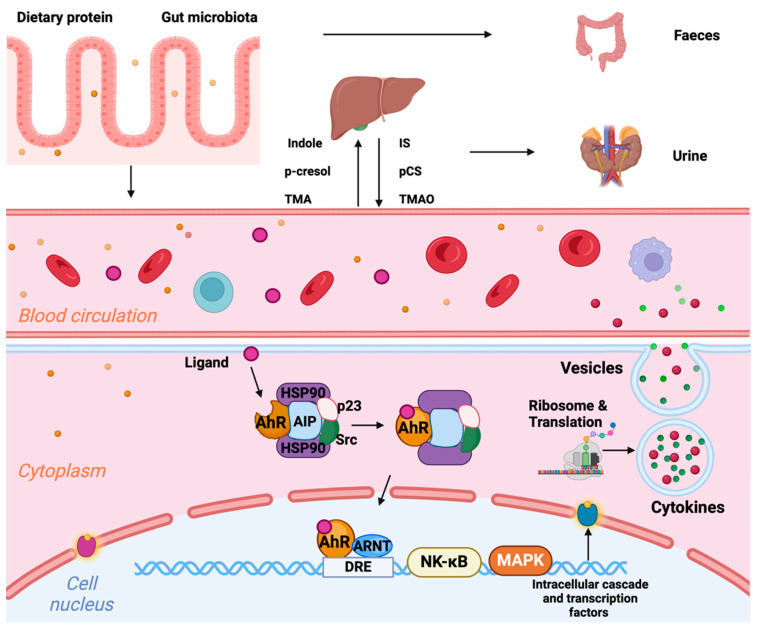Figure 4.
Gut-derived metabolites and the immune response. Dietary proteins, e.g., tryptophan, tyrosine, and L-carnitine (lysine), are digested by intestinal bacteria into bioactive compounds—such as indole, p-cresol, and trimethylamine (TMA)—that can either be removed via faeces or (passively) across the intestinal barrier into the circulation. The remaining precursor molecules are metabolized by hepatic enzymes into indoxyl sulphate (IS), p-cresol sulphate (pCS), and trimethylamine-N-oxide (TMAO), which are excreted by the kidneys. In CRS, the gut microbiota is altered, resulting in increased toxin production; a “leaky” cellular barrier promotes absorption; and reduced kidney clearance promotes the retention of organic compounds. These act as ligands for the aryl hydrocarbon receptor (AhR) in cells. AhR is typically inactivated in the cytoplasm as a part of a complex with heat shock protein (HSP) 90, AhR-interacting protein (AIP), p23, and pp60 Src. Ahr can be activated by the binding of endogenous or exogenous ligands, translocating to the nucleus to interact with the AhR nuclear translocator (ARNT) and binding to dioxin-response elements (DREs), leading to the NF-κB- and MAPK-dependent production of pro-inflammatory cytokines.

